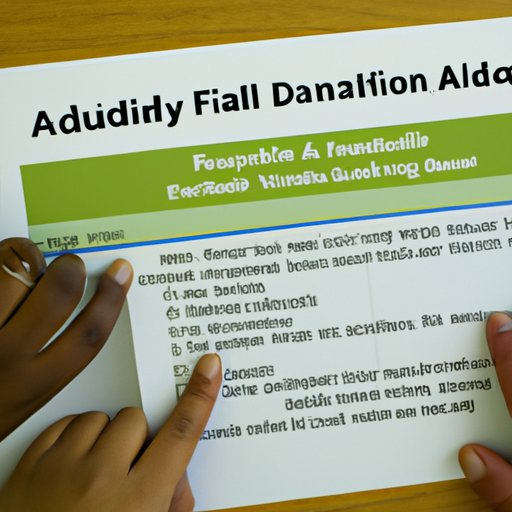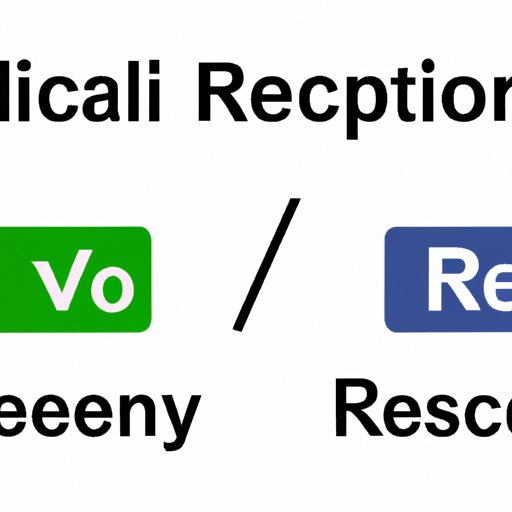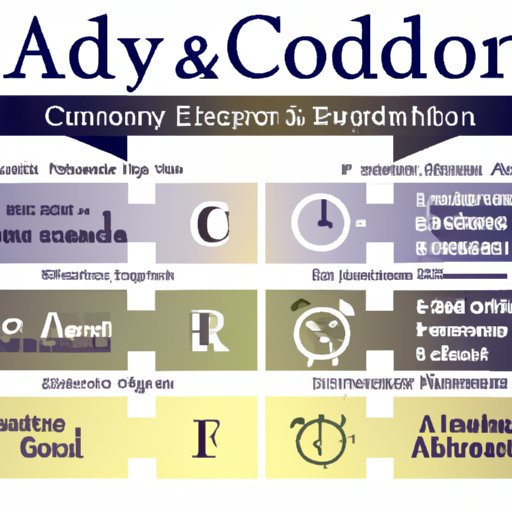Introduction
Early decision (ED) is an accelerated college application process that allows students to apply for admission earlier than the regular deadline. This process can be beneficial for those who are sure of their college choice and want to secure a spot in the incoming class. It also offers the potential for higher admission rates and additional financial aid opportunities. In this article, we’ll explore what early decision is and how it works, and discuss some strategies for deciding if it’s right for you.
The Application Process for Early Decision
Most colleges with an early decision option require applicants to submit their applications by November 1st or 15th. Eligibility requirements vary by school, but typically applicants must meet certain academic criteria and demonstrate a commitment to their chosen college. It’s important to note that most schools do not allow students to apply to multiple schools through the early decision process; however, some may allow students to apply to more than one institution.
Once students have submitted their applications, they will receive a response from the college within two to four weeks. If accepted, the student must accept the offer and withdraw any pending applications at other schools. The student then has until May 1st to submit a deposit and secure their spot in the incoming class.

Financial Aid Implications of Early Decision
When considering the early decision option, it’s important to understand the financial implications. Many colleges offer additional financial aid to students who apply through the early decision process. This can include grants and scholarships, as well as loans and work-study programs. However, it’s important to note that financial aid packages are based on a variety of factors, including a family’s income and assets. It’s also important to consider tuition costs and other fees when making your decision.

Comparing Early Decision with Regular Decision
When comparing early decision with regular decision, there are several key differences to keep in mind. For starters, the application process is much simpler with early decision, as students only need to submit one application. Additionally, early decision applicants typically have higher admission rates, as schools tend to prioritize these students over those who apply during the regular cycle. Finally, early decision applicants have the advantage of knowing their admissions status much earlier in the year, allowing them to start preparing for college sooner.
Breaking Down the Timeline of Early Decision
In order to make the most of the early decision process, it’s important to understand the timeline involved. Most colleges require early decision applications to be submitted by November 1st or 15th. After submitting their applications, students will receive a response from the college within two to four weeks. If accepted, the student must accept the offer and withdraw any pending applications at other schools by May 1st.
In addition to the deadlines mentioned above, there are several other important dates to keep in mind. These include the date when financial aid forms are due, the date when acceptance letters are sent out, and the date when deposits must be submitted. It’s important to plan ahead and prepare for these deadlines in advance.

Strategies for Deciding if Early Decision is Right for You
When it comes to deciding if early decision is right for you, it’s important to assess your options and weigh the benefits. Consider your goals and priorities, and ask yourself whether you’re confident in your college choice. Think about the financial implications, as well as the timeline involved. If you’re still unsure, it’s best to consult with a guidance counselor or college advisor to get more information.
Impact of Early Decision on College Acceptance Rates
Early decision has both advantages and disadvantages for students and colleges alike. For students, the main benefit is the potential for higher admission rates. As mentioned above, schools tend to prioritize early decision applicants over those who apply during the regular cycle. Additionally, early decision applicants may have access to additional financial aid opportunities.
For colleges, the main advantage is the ability to fill the incoming class earlier in the year. This helps colleges better plan for the upcoming academic year and ensures that spots are filled with qualified students. Additionally, early decision can help colleges increase their yield rate, as students who are accepted early are more likely to attend.
Conclusion
Early decision is an accelerated college application process that allows students to apply for admission earlier than the regular deadline. It offers the potential for higher admission rates and additional financial aid opportunities. However, it’s important to understand the timeline involved and weigh the pros and cons before making your decision. Ultimately, early decision can be a great option for those who are sure of their college choice, but it’s important to do your research and make an informed decision.
(Note: Is this article not meeting your expectations? Do you have knowledge or insights to share? Unlock new opportunities and expand your reach by joining our authors team. Click Registration to join us and share your expertise with our readers.)
